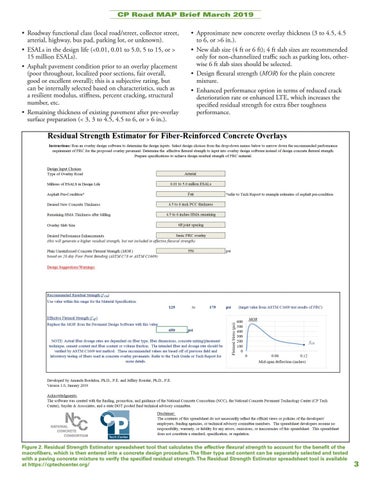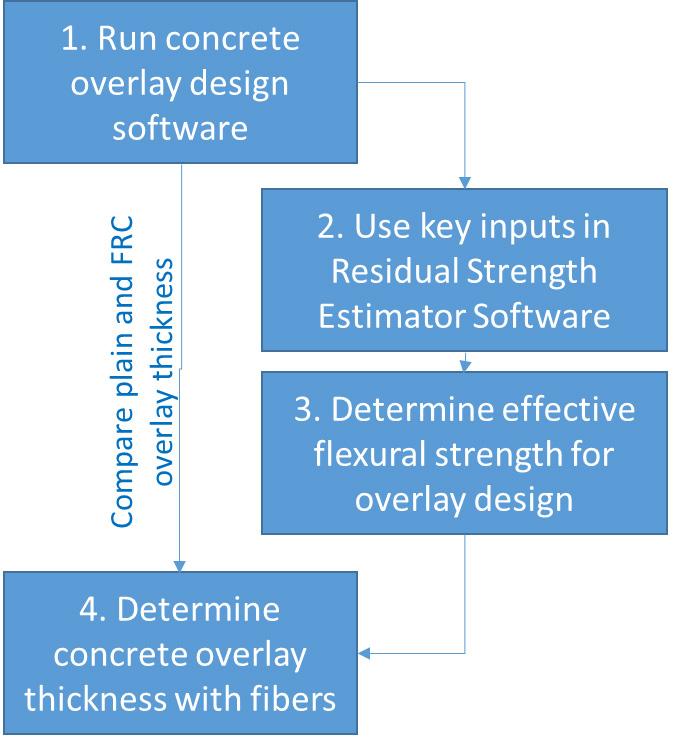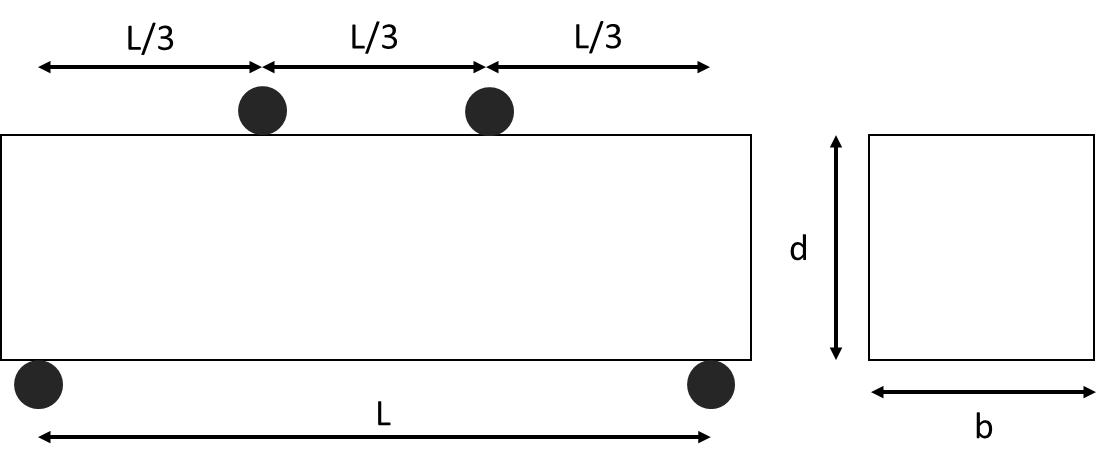CP Road MAP Brief March 2019
• Roadway functional class (local road/street, collector street, arterial, highway, bus pad, parking lot, or unknown). • ESALs in the design life (<0.01, 0.01 to 5.0, 5 to 15, or > 15 million ESALs). • Asphalt pavement condition prior to an overlay placement (poor throughout, localized poor sections, fair overall, good or excellent overall); this is a subjective rating, but can be internally selected based on characteristics, such as a resilient modulus, stiffness, percent cracking, structural number, etc. • Remaining thickness of existing pavement after pre-overlay surface preparation (< 3, 3 to 4.5, 4.5 to 6, or > 6 in.).
• Approximate new concrete overlay thickness (3 to 4.5, 4.5 to 6, or >6 in.). • New slab size (4 ft or 6 ft); 4 ft slab sizes are recommended only for non-channelized traffic such as parking lots, otherwise 6 ft slab sizes should be selected. • Design flexural strength (MOR) for the plain concrete mixture. • Enhanced performance option in terms of reduced crack deterioration rate or enhanced LTE, which increases the specified residual strength for extra fiber toughness performance.
Figure 2. Residual Strength Estimator spreadsheet tool that calculates the effective flexural strength to account for the benefit of the macrofibers, which is then entered into a concrete design procedure. The fiber type and content can be separately selected and tested with a paving concrete mixture to verify the specified residual strength. The Residual Strength Estimator spreadsheet tool is available at https://cptechcenter.org/
3




